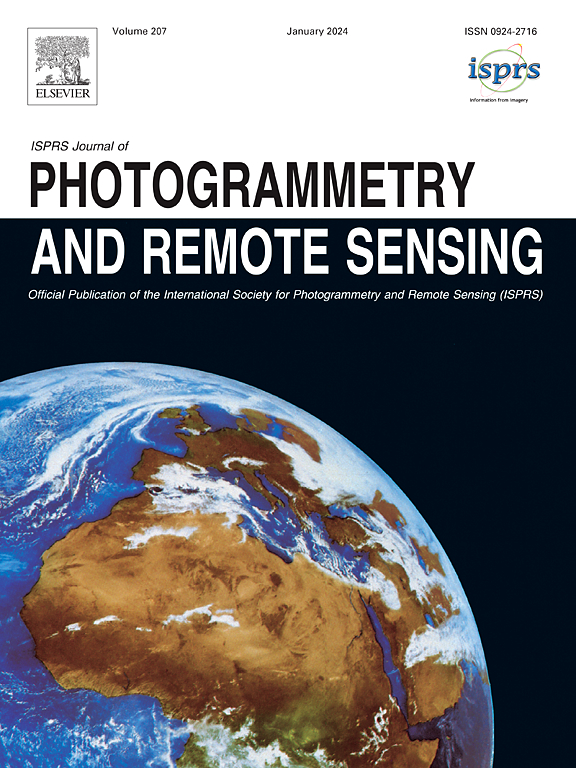Enhancing LiDAR point cloud generation with BRDF-based appearance modelling
IF 10.6
1区 地球科学
Q1 GEOGRAPHY, PHYSICAL
ISPRS Journal of Photogrammetry and Remote Sensing
Pub Date : 2025-02-27
DOI:10.1016/j.isprsjprs.2025.02.010
引用次数: 0
Abstract
This work presents an approach to generating LiDAR point clouds with empirical intensity data on a massively parallel scale. Our primary aim is to complement existing real-world LiDAR datasets by simulating a wide spectrum of attributes, ensuring our generated data can be directly compared to real point clouds. However, our emphasis lies in intensity data, which conventionally has been generated using non-photorealistic shading functions. In contrast, we represent surfaces with Bidirectional Reflectance Distribution Functions (BRDF) obtained through goniophotometer measurements. We also incorporate refractivity indices derived from prior research. Beyond this, we simulate other attributes commonly found in LiDAR datasets, including RGB values, normal vectors, GPS timestamps, semantic labels, instance IDs, and return data. Our simulations extend beyond terrestrial scenarios; we encompass mobile and aerial scans as well. Our results demonstrate the efficiency of our solution compared to other state-of-the-art simulators, achieving an average decrease in simulation time of 85.62%. Notably, our approach introduces greater variability in the generated intensity data, accounting for material properties and variations caused by the incident and viewing vectors. The source code is available on GitHub (https://github.com/AlfonsoLRz/LiDAR_BRDF).

求助全文
约1分钟内获得全文
求助全文
来源期刊

ISPRS Journal of Photogrammetry and Remote Sensing
工程技术-成像科学与照相技术
CiteScore
21.00
自引率
6.30%
发文量
273
审稿时长
40 days
期刊介绍:
The ISPRS Journal of Photogrammetry and Remote Sensing (P&RS) serves as the official journal of the International Society for Photogrammetry and Remote Sensing (ISPRS). It acts as a platform for scientists and professionals worldwide who are involved in various disciplines that utilize photogrammetry, remote sensing, spatial information systems, computer vision, and related fields. The journal aims to facilitate communication and dissemination of advancements in these disciplines, while also acting as a comprehensive source of reference and archive.
P&RS endeavors to publish high-quality, peer-reviewed research papers that are preferably original and have not been published before. These papers can cover scientific/research, technological development, or application/practical aspects. Additionally, the journal welcomes papers that are based on presentations from ISPRS meetings, as long as they are considered significant contributions to the aforementioned fields.
In particular, P&RS encourages the submission of papers that are of broad scientific interest, showcase innovative applications (especially in emerging fields), have an interdisciplinary focus, discuss topics that have received limited attention in P&RS or related journals, or explore new directions in scientific or professional realms. It is preferred that theoretical papers include practical applications, while papers focusing on systems and applications should include a theoretical background.
 求助内容:
求助内容: 应助结果提醒方式:
应助结果提醒方式:


